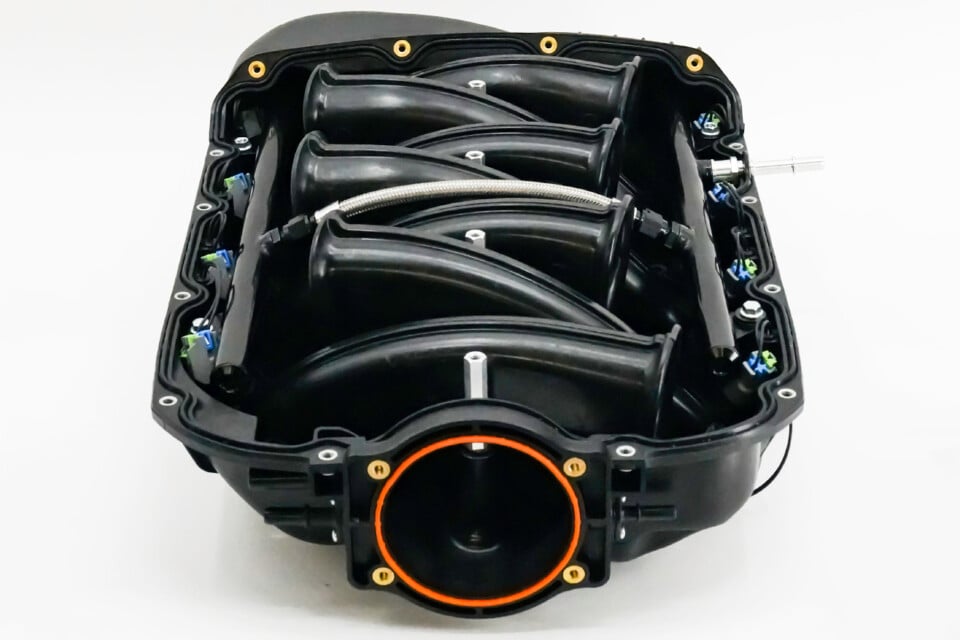When it comes to traditional EFI intake manifold design, there are a few design components that will be in play no matter what — some form of throttle body to meter the incoming air, runners to distribute the air to the intake ports, a plenum to feed the runners, and the someplace to mount the fuel injectors. Ever since the advent of electronic fuel injection, manifold designers have manipulated those features to try and optimize airflow and fuel delivery to more efficiently meet the engine’s demands.
The team at Performance Design, known largely for their innovative carbon fiber intake manifolds, recently released something that really showcases their ability to think outside of the box in both design and manufacturing — the XS manifold. This new design incorporates some very unique features not before seen in the world of intake manifolds, in order to combine runner length and plenum volume, in a package designed to fit in even the most hood-clearance-challenged engine bays.
One of the greatest challenges faced by the engineers was the absolute unit of a factory GM LS3 intake manifold. The OEM design doesn’t really leave much on the table, meaning it takes serious R&D to make power gains in a stock application. This was accomplished through some real innovation from the XS manifold designers. They took the traditional port-injection fuel rails and enclosed them inside of the plenum.
As you can visualize here, by encapsulating the fuel rails, the plenum volume is increased significantly while long runners can be used in an overall compact package.
That not only allows for precisely designed runner lengths to be packed into a confined space, but has also allowed for a significant plenum volume. You might be wondering how you can put the fuel rails and injectors inside of the plenum, and the answer is a unique hardline plumbing configuration designed into the manifold itself to feed the custom billet fuel rails. Couple that with injector harness extensions passing through custom-designed airtight grommets built into the manifold.
Now, looking beyond the obvious attention-getter, you might notice that the intake runners are marked “A,” “B,” and “C.” If you inferred that there are three different runner lengths being utilized, you are correct, as the team used computational fluid dynamics, coupled with extensive dyno testing, to develop the ideal runner length for each cylinder in the engine. Manufactured from glass-reinforced Nylon,…
Click Here to Read the Full Original Article at DragzineDragzine…

